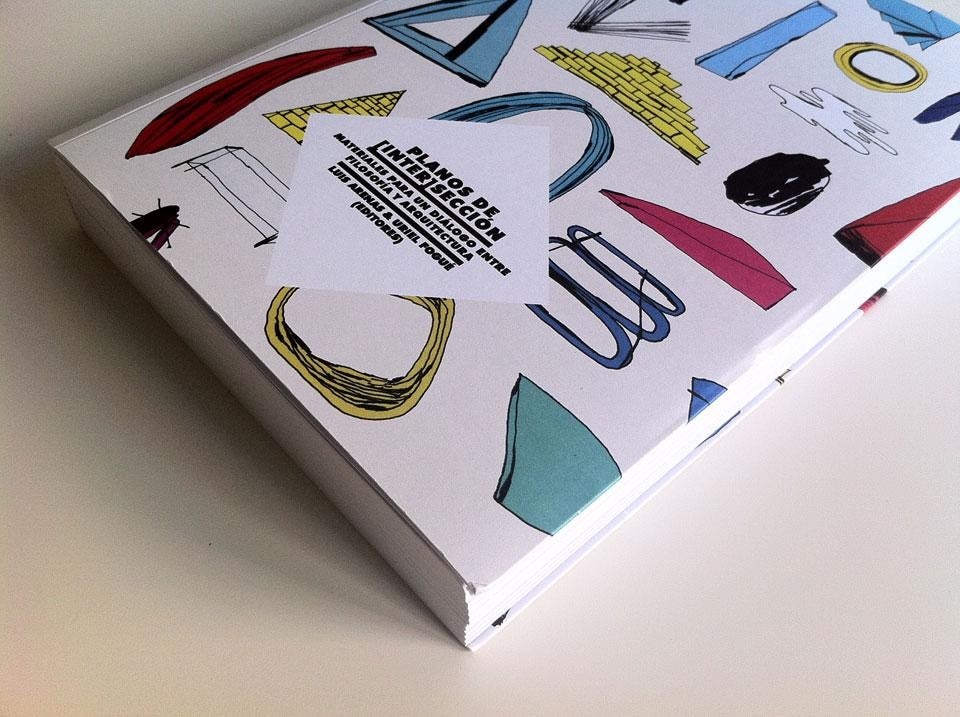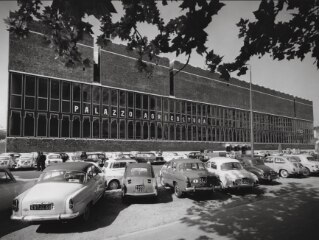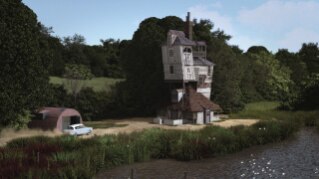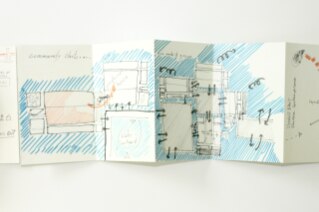Can architecture work collaboratively with philosophy? It is the "modus operandi" of both disciplines equiparable? Can the operations of the contemporary city be planned from philosophical questions? Can a group of architects and philosophers work together on the same project?
The recent book Planos de [Inter]sección: Materiales para un diálogo entre Filosofía y Arquitectura [Plans of [Inter] section. Materials for a dialogue between philosophy and architecture] sheds light onto the relationship between the two disciplines. In 2004, editors Luis Arenas and Uriel Fogué started working with a group of interdisciplinary professionals, including teachers from different Spanish universities, discovering that their interests came together to establish a dialectic between philosophy and architecture. In 2006 this informal group turns officially into a research group named [Inter]section, a singular network that has been formalizing over the years, crystallising as a stable group. They promote a a series of educational initiatives, academic activities, meetings, seminars and research projects, all focused to analyze the encounter between philosophy and architecture, seeking to define the intellectual identity and guidelines of this research. The group has defined itself as "open", opening the possibility of collaboration with research groups with similar interests, regardless of their nationality.
![Luis Arenas and Uriel Fogué (ed.), <em>Planos de [Inter]sección: Materiales para un diálogo entre Filosofía y Arquitectura</em>[Plans of [inter]section. Materials for a dialogue between philosophy and architecture], Editorial Lampreave, 2011 Luis Arenas and Uriel Fogué (ed.), <em>Planos de [Inter]sección: Materiales para un diálogo entre Filosofía y Arquitectura</em>[Plans of [inter]section. Materials for a dialogue between philosophy and architecture], Editorial Lampreave, 2011](/content/dam/domusweb/en/reviews/2012/08/10/plans-of-inter-section/big_390951_9073_02-web_IMG_0002.jpg.foto.rmedium.jpg)
![Luis Arenas and Uriel Fogué (ed.), <em>Planos de [Inter]sección: Materiales para un diálogo entre Filosofía y Arquitectura</em>[Plans of [inter]section. Materials for a dialogue between philosophy and architecture], Editorial Lampreave, 2011 Luis Arenas and Uriel Fogué (ed.), <em>Planos de [Inter]sección: Materiales para un diálogo entre Filosofía y Arquitectura</em>[Plans of [inter]section. Materials for a dialogue between philosophy and architecture], Editorial Lampreave, 2011](/content/dam/domusweb/en/reviews/2012/08/10/plans-of-inter-section/big_390951_5219_03-web_IMG_9991.jpg.foto.rmedium.jpg)
The book constantly evokes a question — should we take into account the intersection between these two disciplines, or others, for that matter, in order to spark and increase innovation processes?
![Luis Arenas and Uriel Fogué (ed.), <em>Planos de [Inter]sección: Materiales para un diálogo entre Filosofía y Arquitectura</em>[Plans of [inter]section. Materials for a dialogue between philosophy and architecture], Editorial Lampreave, 2011 Luis Arenas and Uriel Fogué (ed.), <em>Planos de [Inter]sección: Materiales para un diálogo entre Filosofía y Arquitectura</em>[Plans of [inter]section. Materials for a dialogue between philosophy and architecture], Editorial Lampreave, 2011](/content/dam/domusweb/en/reviews/2012/08/10/plans-of-inter-section/big_390951_9301_04-web_IMG_0073.jpg.foto.rmedium.jpg)
![Luis Arenas and Uriel Fogué (ed.), <em>Planos de [Inter]sección: Materiales para un diálogo entre Filosofía y Arquitectura</em>[Plans of [inter]section. Materials for a dialogue between philosophy and architecture], Editorial Lampreave, 2011 Luis Arenas and Uriel Fogué (ed.), <em>Planos de [Inter]sección: Materiales para un diálogo entre Filosofía y Arquitectura</em>[Plans of [inter]section. Materials for a dialogue between philosophy and architecture], Editorial Lampreave, 2011](/content/dam/domusweb/en/reviews/2012/08/10/plans-of-inter-section/big_390951_6227_05-web_IMG_9989.jpg.foto.rmedium.jpg)
![Luis Arenas and Uriel Fogué (ed.), <em>Planos de [Inter]sección: Materiales para un diálogo entre Filosofía y Arquitectura</em>[Plans of [inter]section. Materials for a dialogue between philosophy and architecture], Editorial Lampreave, 2011 Luis Arenas and Uriel Fogué (ed.), <em>Planos de [Inter]sección: Materiales para un diálogo entre Filosofía y Arquitectura</em>[Plans of [inter]section. Materials for a dialogue between philosophy and architecture], Editorial Lampreave, 2011](/content/dam/domusweb/en/reviews/2012/08/10/plans-of-inter-section/big_390951_7556_06-web_IMG_0004.jpg.foto.rmedium.jpg)
![Luis Arenas and Uriel Fogué (ed.), <em>Planos de [Inter]sección: Materiales para un diálogo entre Filosofía y Arquitectura</em>[Plans of [inter]section. Materials for a dialogue between philosophy and architecture], Editorial Lampreave, 2011 Luis Arenas and Uriel Fogué (ed.), <em>Planos de [Inter]sección: Materiales para un diálogo entre Filosofía y Arquitectura</em>[Plans of [inter]section. Materials for a dialogue between philosophy and architecture], Editorial Lampreave, 2011](/content/dam/domusweb/en/reviews/2012/08/10/plans-of-inter-section/big_390951_6436_07-web_IMG_9987.jpg.foto.rmedium.jpg)










